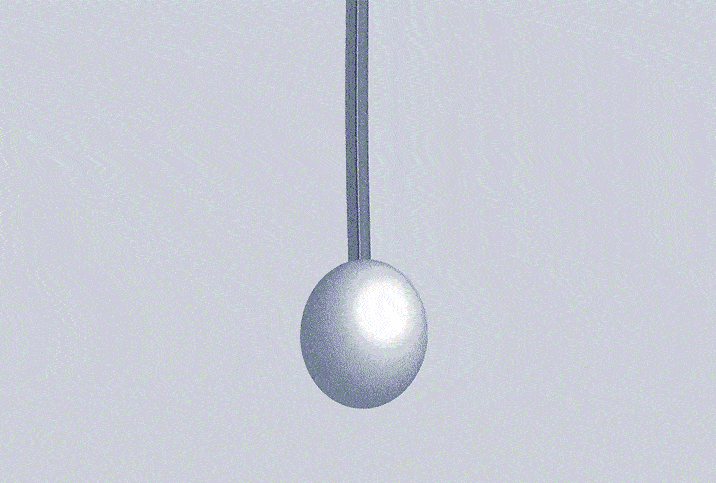How to Know for Sure It's Testicular Torsion and What to Do Next

In most emergency medical situations, you know something's up. The sous-chef accidentally fillets a finger. Your boss grabs his chest and collapses on the 17th tee. Whatever it is, it's usually apparent there's an emergency.
That's not always the case with testicular torsion, the twisting of the spermatic cord that carries blood to the testicle. In fact, testicular torsion is a true emergency condition that can come out of nowhere and may not be recognized as an emergency right away.
How is testicular torsion diagnosed? What are the procedures for treating it, and what is the prognosis for people who experience the condition?
Most importantly, how crucial is it to seek immediate treatment?
Diagnosing testicular torsion
Testicular torsion presents with symptoms such as the following:
- Intense pain
- Swelling
- A high-riding testicle
- Scrotal discoloration
- Nausea
- Vomiting
The twisting can partially or completely cut off the blood supply to the testicle. If it's left untreated for even a short amount of time, the testicle may die.
Testicular torsion affects 1 in 4,000 people younger than 25 who have testicles. It can develop at any age, however, the most likely candidates are adolescents, according to Cleveland Clinic. Some 65 percent of people who experience testicular torsion are between 12 and 18 years old.
Amanda North, M.D., is the director of urology at the Children's Hospital at Montefiore in the Bronx, New York. She deals with testicular torsion cases, including a recent unusual one in which the patient presented with swelling but not the excruciating pain that's usually the primary symptom.
"It was a 16-year-old boy who has pretty bad cerebral palsy," North said. "So he's wheelchair-bound and he can talk a little bit, but he's not very verbal. And so the mom was giving him his evening bath and she noticed some swelling."
Like most people, the mother didn't recognize the symptoms of testicular torsion, especially with the boy being mostly unable to communicate his discomfort. When there was no improvement by morning, she took him to the emergency room.
"She didn't know; you don't know what you don't know," North said. "So he went to the ER with the chief complaint of scrotal swelling. On exam, the right testicle was very high in the scrotum, that typical high-riding testicle."
The next steps in diagnosis typically involve testing blood flow to the testicle and contacting a surgeon such as North to get emergency surgery underway.
"The resident met him in sonogram and called me to say it certainly looked like a torsion, possibly a dead testicle," North said. "On the sonogram, they read it as a heterogeneous testicle, which means that there were already pockets of necrosis in the testicle. So we knew going into it that it was unlikely to be salvageable."
Procedures for testicular torsion
The next step was a surgical intervention to untwist the spermatic cord and see what was going on in there as quickly as possible.
"I was actually driving my child home from wrestling practice," North said. "So I dropped my kid off at home and drove straight in. As I was changing clothes in the locker room, they were wheeling him in. So from the time I was called until we had him on the OR [operating room] table, it was maybe 45 minutes."
The procedure involves opening up the scrotum, examining the testicle, untwisting the spermatic cord, then giving it a chance to revive once blood flow is restored. Even if the affected testicle looks unsalvageable, the surgical team wraps it in gauze soaked in warm water in order to promote blood flow.
While giving the testicle some time to see if blood flow might return, North took steps to make sure the remaining testicle wouldn't suffer a similar fate by suturing it to the inner wall of the scrotum.
"We do what's called an orchiopexy or a testis fixation on the good side so it can never twist," she said. "It's standard of care in the U.S. to fix the opposite testicle at the time of surgery, especially because he only has one testicle."
Once that's done, the surgical team takes another look at the testicle after detorsion to see how it's doing.
In this boy's case, with a testicle that was deprived of full blood flow overnight, the news wasn't good.
"Unfortunately, he had a dead testicle," North said. "Just to make sure, I cut into it and I got black ooze, which is never a good sign. And so we went ahead and removed it."
Prognosis
Luckily, the outlook for people who have undergone testicular torsion surgery—whether or not they lose the testicle—is generally good. In most cases, one testicle produces enough testosterone and sperm for a healthy, normal life, including the ability to reproduce.
If the surgeon is able to save the testicle, there will likely be no issues.
"Overall, they do really well," North said. "If the testicle looks really healthy, those kids are going to do great. Other kids, you know that it's questionable, but you make the decision to keep it in. And you counsel the patients, 'Hey, we did our best, but in six months, you might not have a testicle on that side.' And it's not from the surgery; it's from the condition, of course."
Seek medical attention immediately
Testicular torsion is all about understanding the importance of getting immediate medical attention. By the six-hour mark, there may be tissue damage, and beyond that time, the testicle will likely need to be removed; waiting 12 hours results in 75 percent of patients losing the testicle, according to Cleveland Clinic.
North explains testicular torsion pain to her patients.
"If it's sudden onset and out of nowhere, lasts more than 30 minutes, and doesn't get better with a change of position or anything like that—especially if it's associated with nausea and vomiting—you do not pass go, you do not collect $200. You go to your nearest emergency room," she said.
North emphasized that people should opt for a hospital emergency room with operating facilities over an urgent care facility. She suggested that anyone younger than 18 go to a children's hospital if possible, because many non-children's hospitals won't operate on children, and a transfer could cost you precious hours.
No matter how long it's been, though, remember that you never know what's going on inside the testicle until the surgeon looks. A 720-degree twist cuts off far more blood flow than a 180-degree twist, for instance. Sometimes even testicles that have been twisted for a long time can be saved.
"Even if it's been 12 hours, you still go in," North said. "We all know a longer time frame is worse, but I have saved testicles I didn't think I'd be able to save. So I think those [recommended] time frames are almost dangerous because it can communicate the wrong message, like, 'It's too late, so there's no point in going in now.'
"Let's take a look," she added. "Let's see what we can do. The sooner, the better, but don't stay home because you're worried it's dead."


















